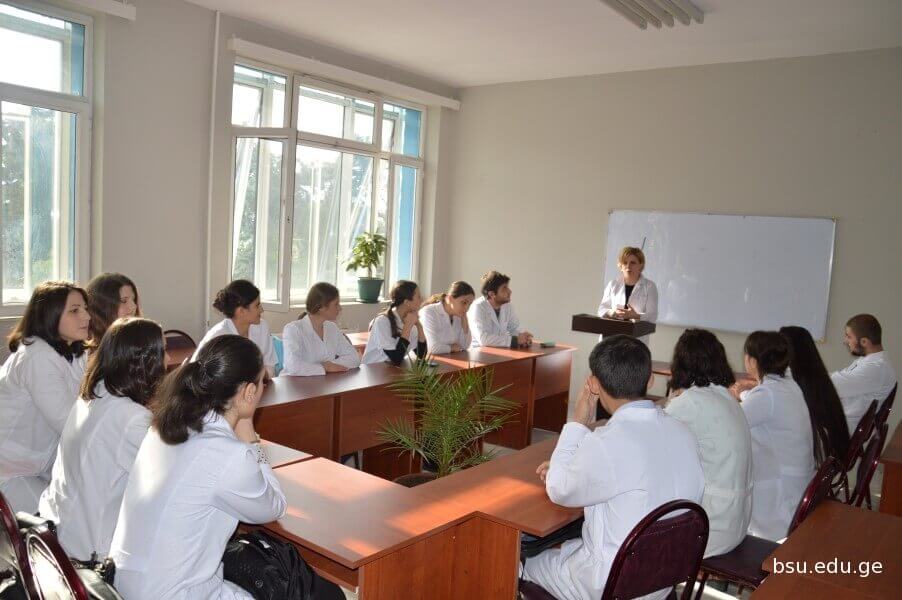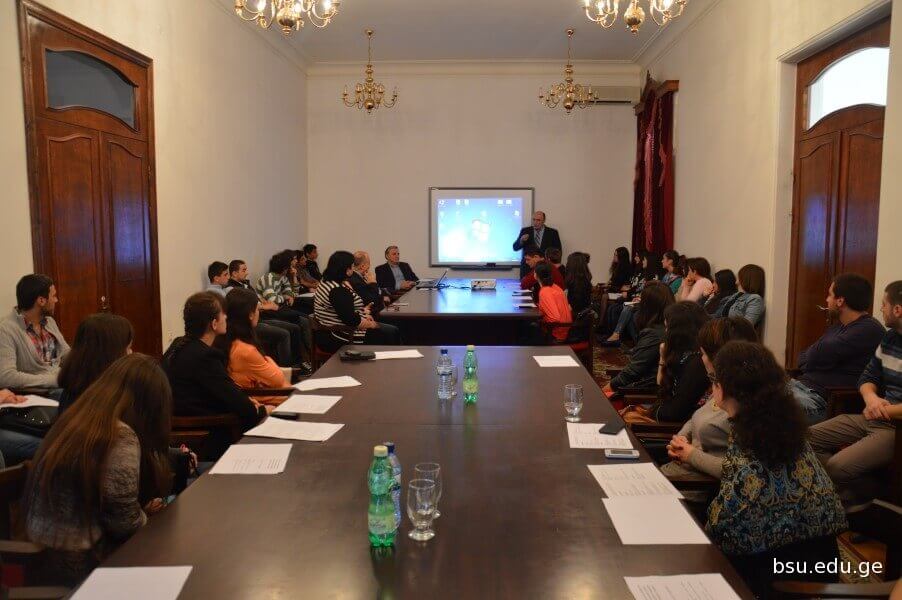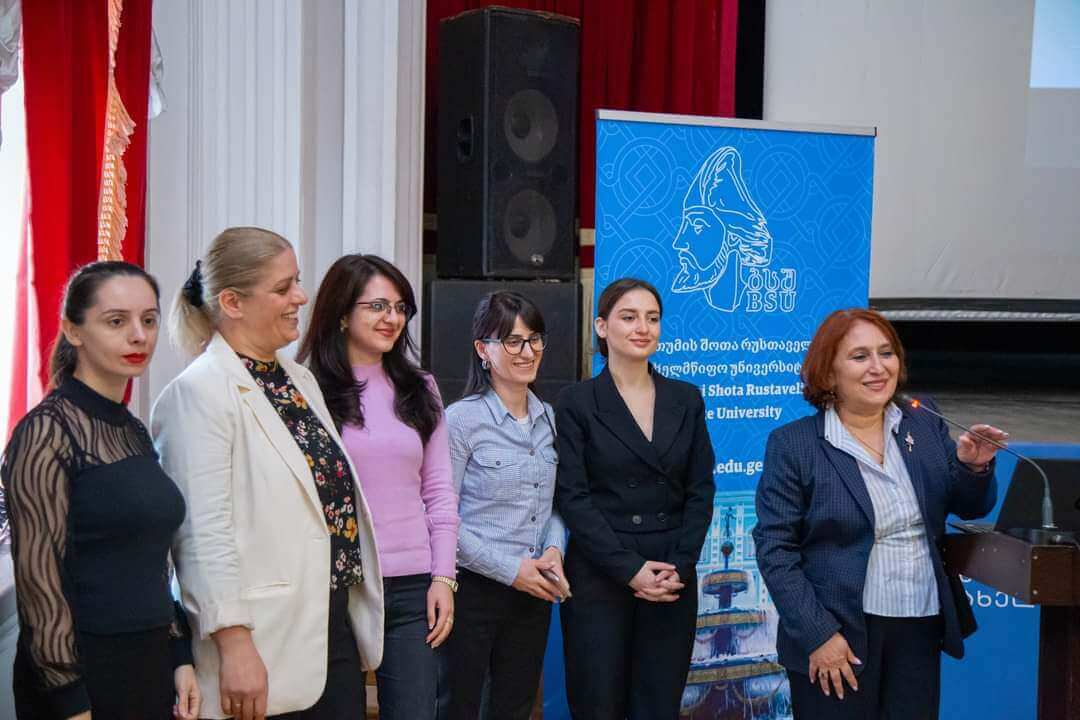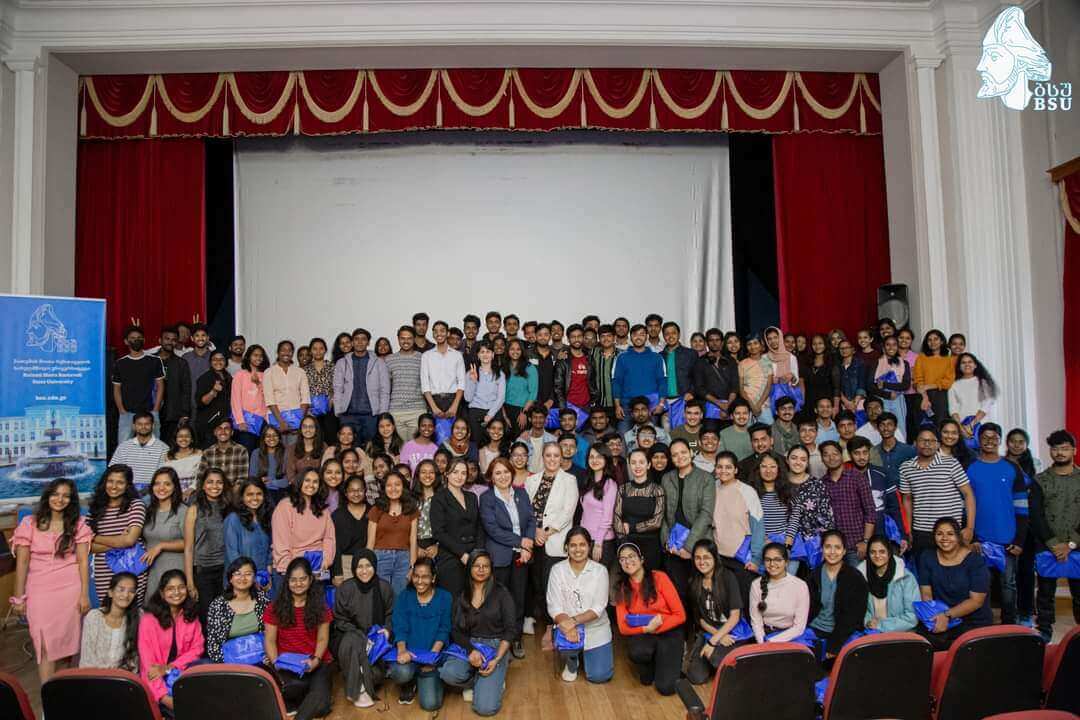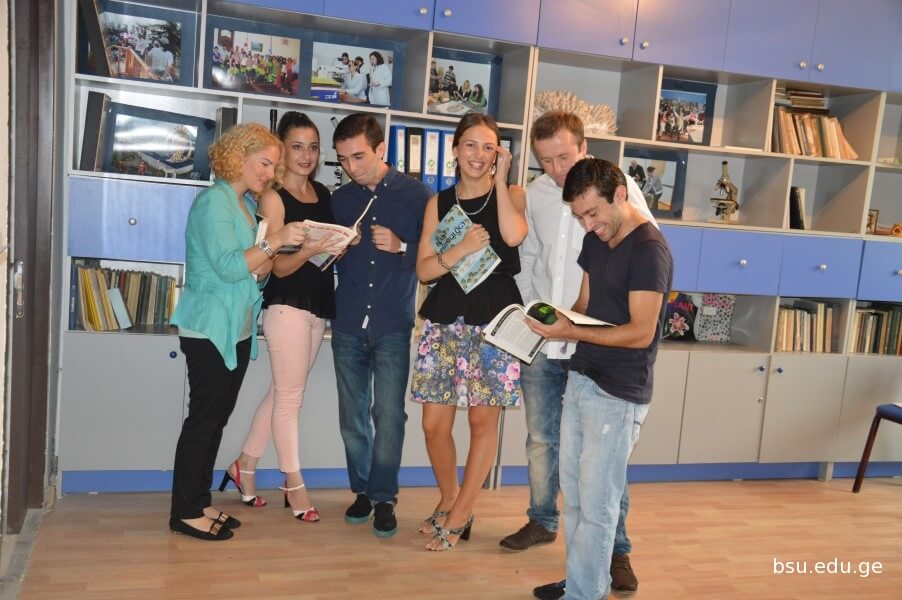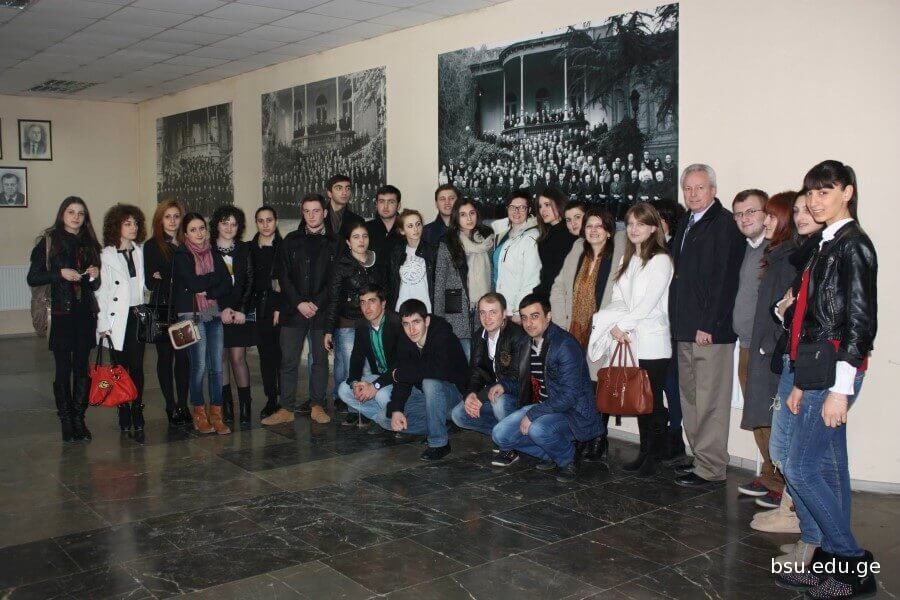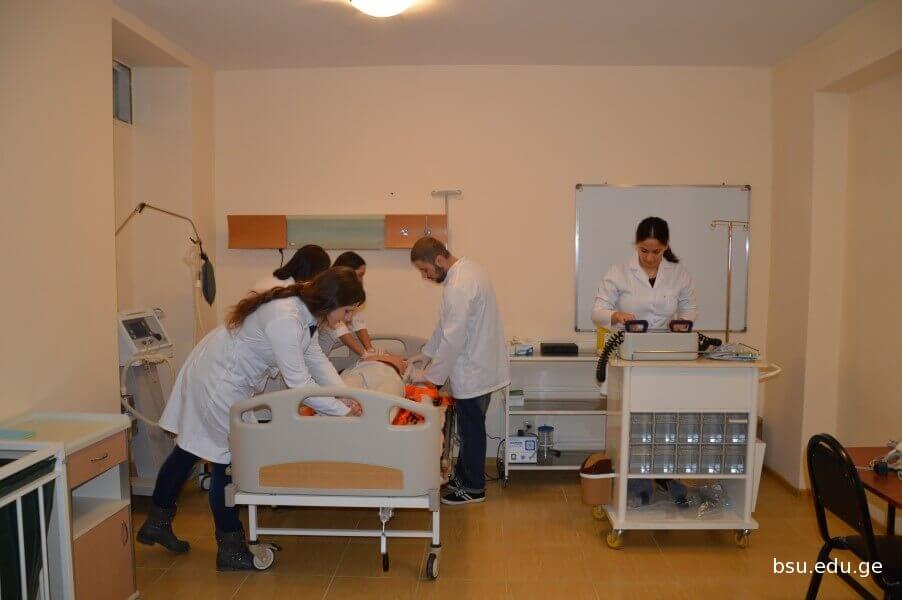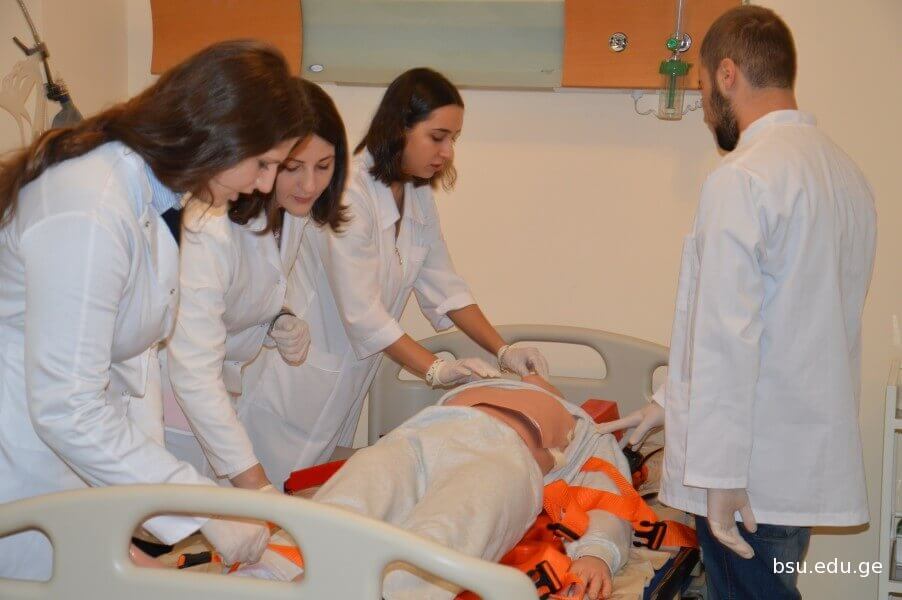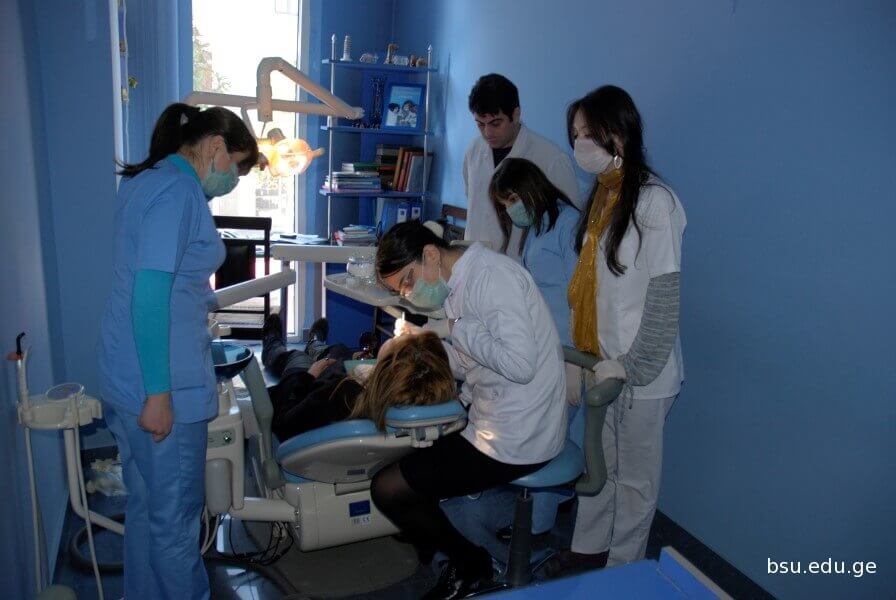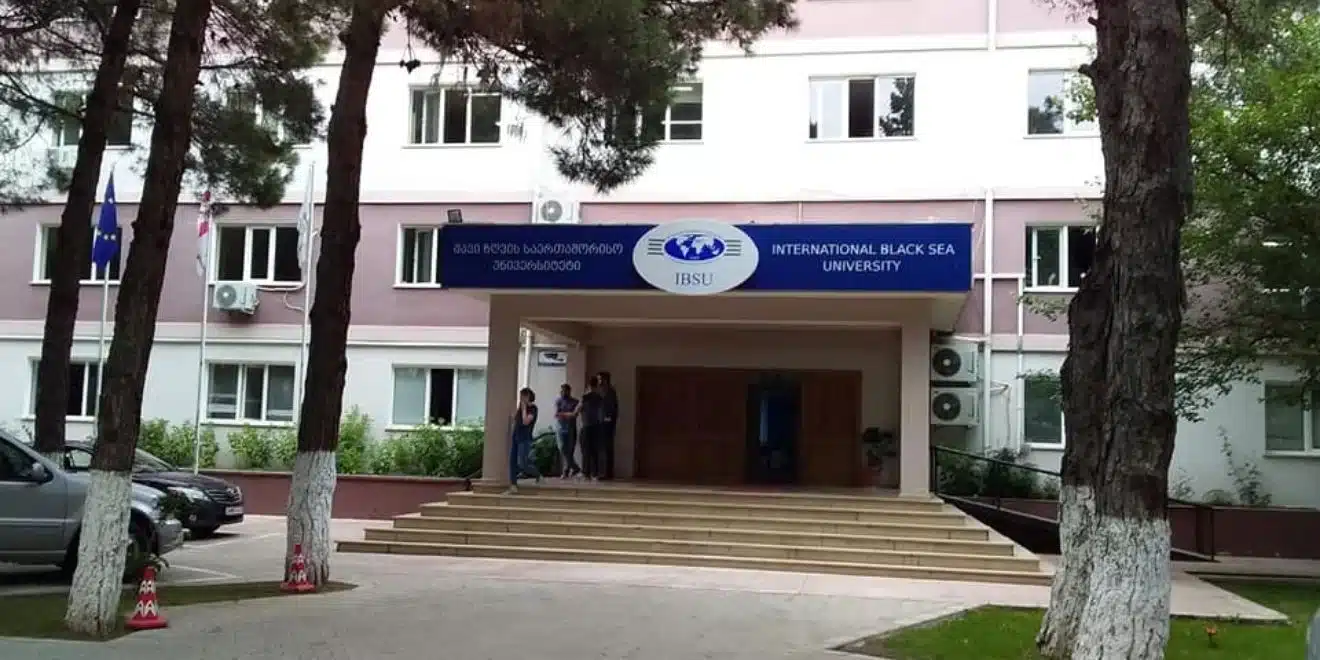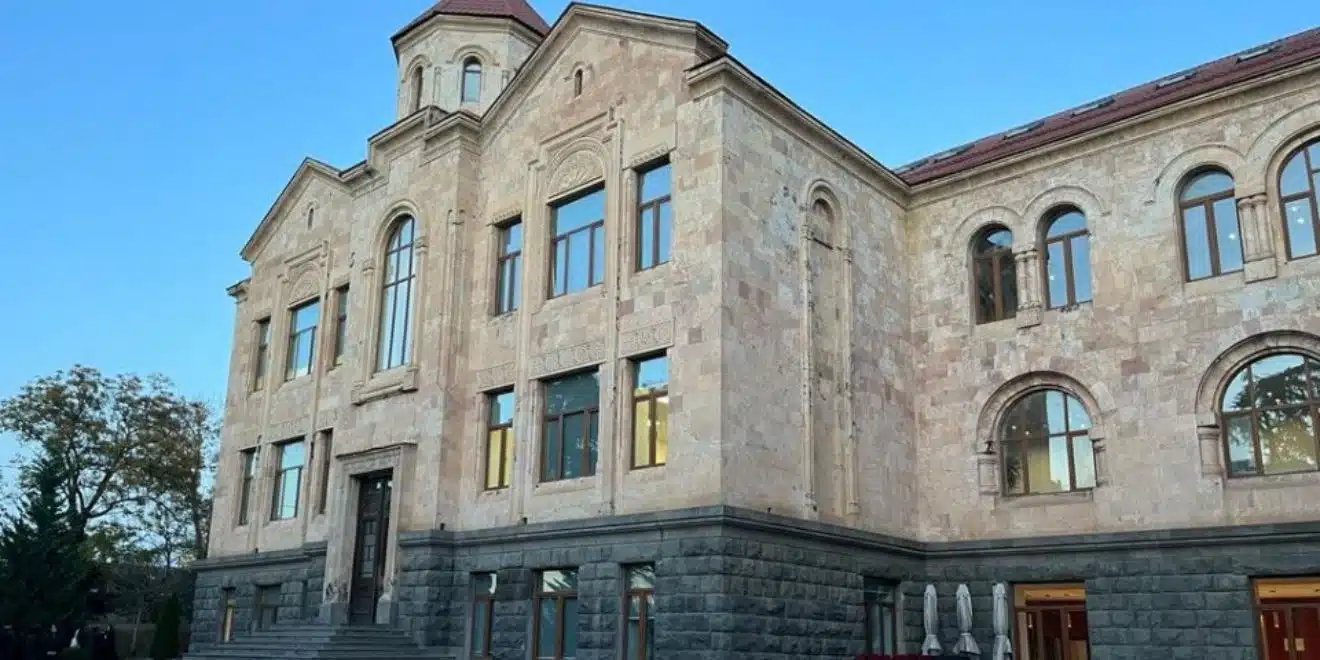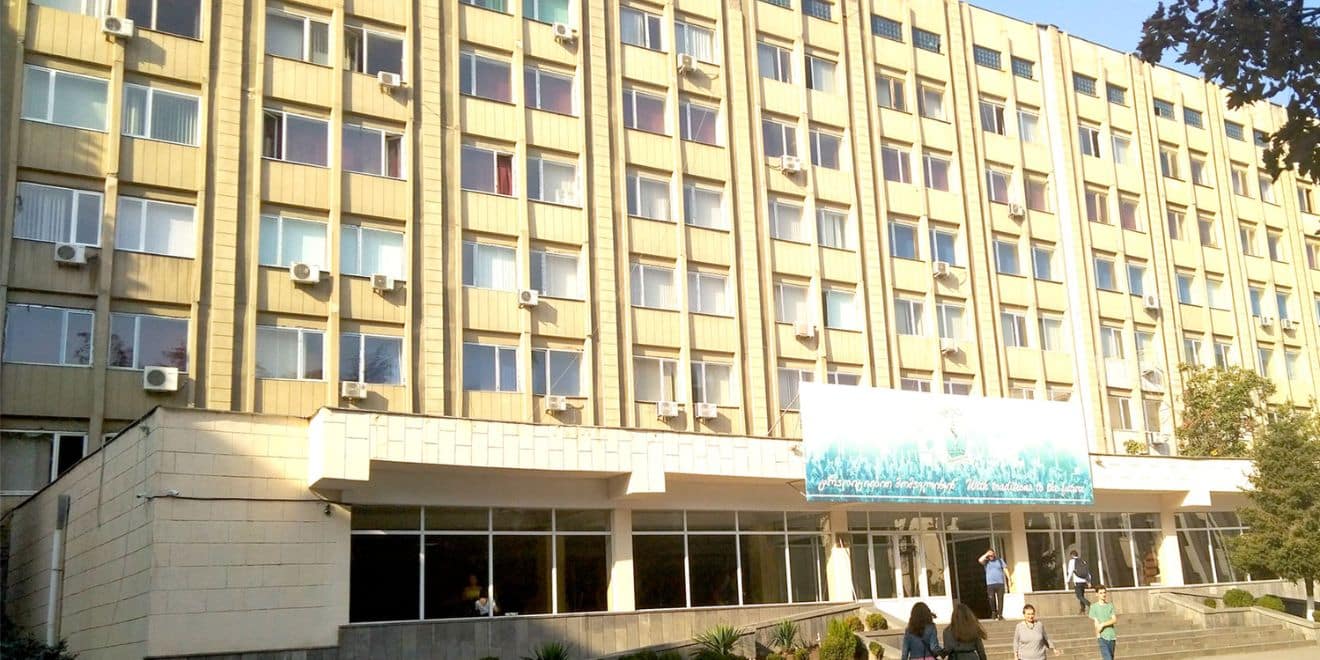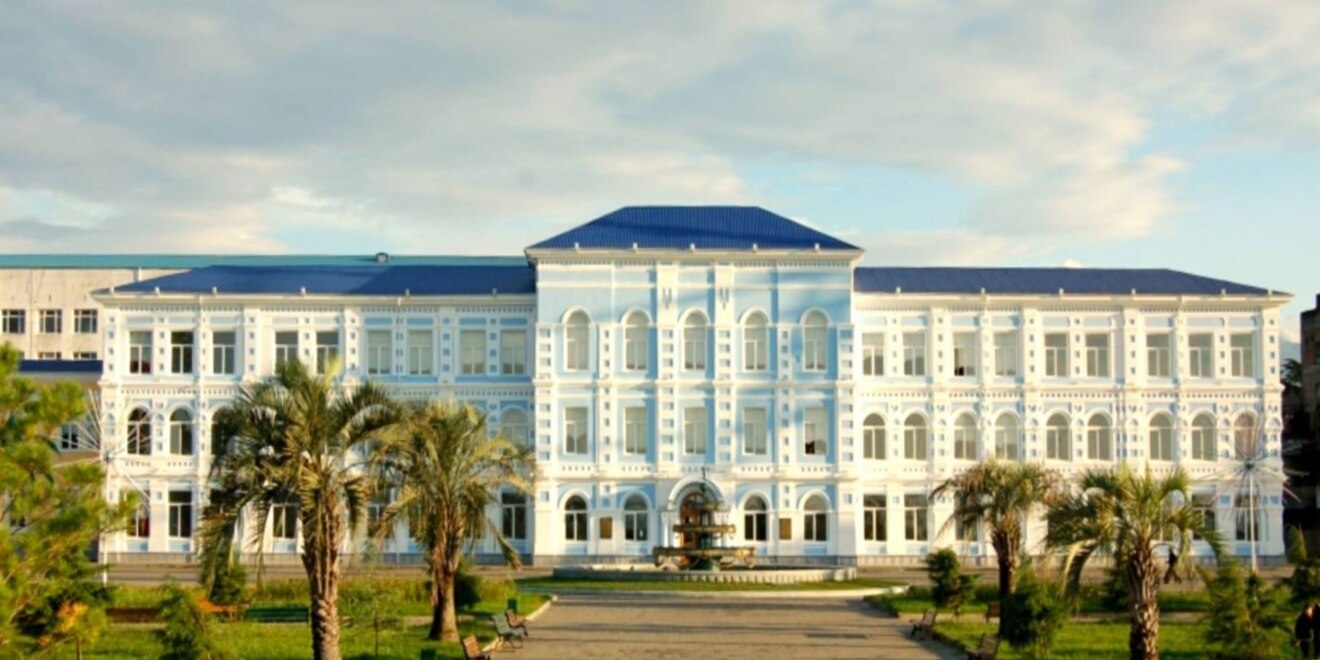
Batumi Shota Rustaveli State University
The establishment and evolution of the educational system in Adjara were long-term endeavors for the Georgian community. In 1893, there was a push to open a Boys’ Gymnasium in Batumi, which culminated in the Municipality granting 623.95 sq/m of land for this purpose on 26-27 June of that year. The project, designed by engineer Sedelnikoy, included a gym on the first floor and various facilities like a church, assembly hall, classrooms, art studio, physics study-room, laboratory, and library on the second floor. The Boys’ Gymnasium commenced operations in July 1897, and by 26 September 1900, a Women’s Gymnasium was also established.
Subsequently, in 1923, an education Institute was established within the former Women’s Gymnasium building (now known as Public Faculty №2), which later evolved into an education college focusing on training primary school educators.
In 1935, within the Boys’ Gymnasium building, a 2-year Teacher’s Institute was inaugurated, offering faculties in Georgian Language and Literature, Physics-Mathematics, History, and Natural Sciences-Geography. This institute continued to expand, adding a faculty of Russian Language and Literature in 1938, and was officially named after Shota Rustaveli in the same year.
Khusein Nakaidze served as the first director of the Teachers’ Institute, and it received significant support in terms of scientific personnel from other higher educational institutions in Georgia, notably Tiflis State University. The institute was enriched by the contributions of prominent Georgian academics such as Giorgi Akhvlediani, Giorgi Tsereteli, Iase Tsintsadze, Sargis Kakabadze, Simon Kaukhchishvili, Giorgi Tavzishvili, Razhden Khutsishvili, Dimitri Gedevanishvili, Giorgi Javakhishvili, Vukol Beridze, Shota Dzidziguri, and others. Their efforts contributed to the institute’s growing reputation, the development of its teaching and research activities, and the emergence of local academic talent, as evidenced by the presence of 5 candidates of sciences at the institute by 1943.
In July 1935, propaedeutic courses were introduced, significantly attracting high school candidates from the Adjara highlands. This initiative resulted in 600 school leavers submitting applications to the Institute in its inaugural year, with 219 applicants being accepted.
In June 1945, an Education Institute was established based on the Batumi Teachers’ Institute. This was followed by a period of reconstruction and enhancement of facilities and equipment, culminating in the completion of a restored building in 1956. However, the space was insufficient for the Institute’s growth, leading to the commencement of a new 5-storeyed building in 1977, which was completed in 1982.
With the collapse of the Soviet Empire and Georgia’s quest for independence, the need for a prominent educational institution in Batumi was recognized, echoing the sentiments of Ivane Javakhishvili: “If there is to be another university in Georgia, it must be in Batumi.”
By Decision №453 on September 3, 1990, the Cabinet of Ministries of Georgia established Batumi State University on the foundation of Batumi Pedagogical Institute. This transformation led to the creation of 9 university chairs alongside special faculty chairs. The university expanded its scope with the addition of faculties in law, economics, and medicine. As part of a broader educational reform, the university adopted a two-cycle teaching system, introducing Bachelor and Master Levels, and offering post-graduate studies in certain specialties.
According to Georgian Government Decree №37 issued on 23 February 2006, Batumi Shota Rustaveli State University was formed through the reorganization and consolidation of various educational institutions, including Batumi Institute of Art, Batumi Zakaria Paliashvili State Conservatory, Batumi Institute of Aviation, Batumi Institute of Agrarian Biotechnologies and Business, Scientific-Research Institute of Membrane Technologies, and Batumi Agricultural Institute. This resulted in the establishment of the “Legal Entity of Public Law – Shota Rustaveli State University,” which is an accredited higher educational institution under Decree №103/a from 27 October 2006 by the National Accreditation Center.
Further developments occurred with Decree №176 on 26 September 2009, where LEPL Batumi Botanical Garden became part of the university, followed by Decree №185 on 9 July 2010, which included Niko Berdzenishvili Research Institute and Institute of Phytopathology.
The RSU Academic Council Decision №16 and №17 on 17 February 2011 led to the establishment of a Scientific Center encompassing Niko Berdzenishvili Humanities and Social Sciences, Membrane Technologies, and Phytopathology directions.
Batumi Shota Rustaveli State University is structured into nine faculties: Humanities, Education, Business and Economics, Law, Social and Political Sciences, Natural Sciences and Healthcare, Physics-Mathematics and Computer Sciences, Technological, and Tourism. Additionally, it houses three research institutes: Niko Berdzenishvili Institute, Agrarian and Membrane Technologies Institute, and Institute of Phytopathology and Biodiversity. Currently, the university hosts approximately 6,000 students across vocational, Bachelor, Master, and Doctoral programs.
The university’s facilities and equipment have steadily expanded and improved over time, alongside an increase in student enrollment, enhancements in teaching programs, introduction of new specialties, and the training of qualified personnel. The teaching and research activities involve 273 professors, 71 researchers, and 387 visiting professors.
Batumi Shota Rustaveli State University achieved successful authorization and accreditation in 2011, offering a diverse array of educational programs across vocational (42), Bachelor’s (43), Master’s (23), doctoral (8), and single-level (2) categories. The university maintains a balance between traditional and contemporary fields, utilizing modern teaching methods such as online learning. Its scientific-research focus aligns with its academic potential, traditions, and geographical advantages, spanning Natural Sciences, Humanities, Social Sciences, Law, Mathematical and Computer Sciences, Engineering, Technologies, Business, Public Health, and agricultural domains.
This institution functions as a comprehensive hub for academic and professional education and research, fostering collaboration among students, professors, teachers, and researchers. It has completed numerous significant scientific-research projects, both nationally and internationally. Through strong partnerships with leading higher education institutions locally and globally, Batumi Shota Rustaveli State University is recognized as an ideal venue for scientific conferences and symposia across various disciplines. Additionally, its academic and scientific faculty actively participates in exchange programs and conferences worldwide. The “Batumi – A University City” project has further enriched the university’s development prospects.
Batumi Shota Rustaveli State University
Batumi Shota Rustaveli State University
Batumi Shota Rustaveli State University in Georgia utilizes S3D MediMagic by VINFORMAX, London, Europe’s pioneer Stereoscopic 3D Medical Education platform. With over 275 lessons in Stereoscopic 3D aligned to a Common Global Medical Curriculum, this platform offers an immersive learning experience. It presents captivating visuals of intricate anatomical structures and inherent physiological processes, promoting depth perception and enhancing long-term memory retention. This cutting-edge technology is seamlessly integrated into routine lectures via an advanced Learning Management System by the faculty. Such a progressive pedagogical approach equips medical students to understand fundamental biological processes within the context of health and disease. It also prepares them to navigate complex medical procedures with utmost precision as future medical professionals.
Batumi Shota Rustaveli State University
| Batumi Shota Rustaveli State University | 1st Year | 2nd Year | 3rd Year | 4th Year | 5th Year | 6th Year |
|---|---|---|---|---|---|---|
| Tuition Fees/Year in US Dollars | 5000 USD | 5000 USD | 5000 USD | 5000 USD | 5000 USD | 5000 USD |
| Total in Indian Rupees/Per Year | 4,00,000 INR | 4,00,000 INR | 4,00,000 INR | 4,00,000 INR | 4,00,000 INR | 4,00,000 INR |
